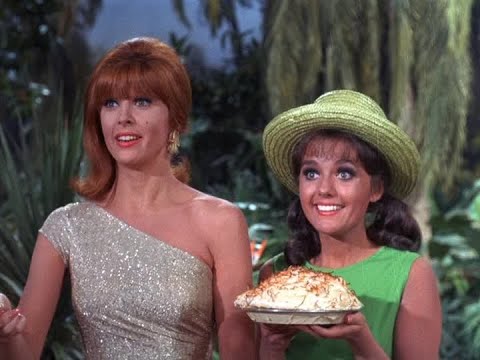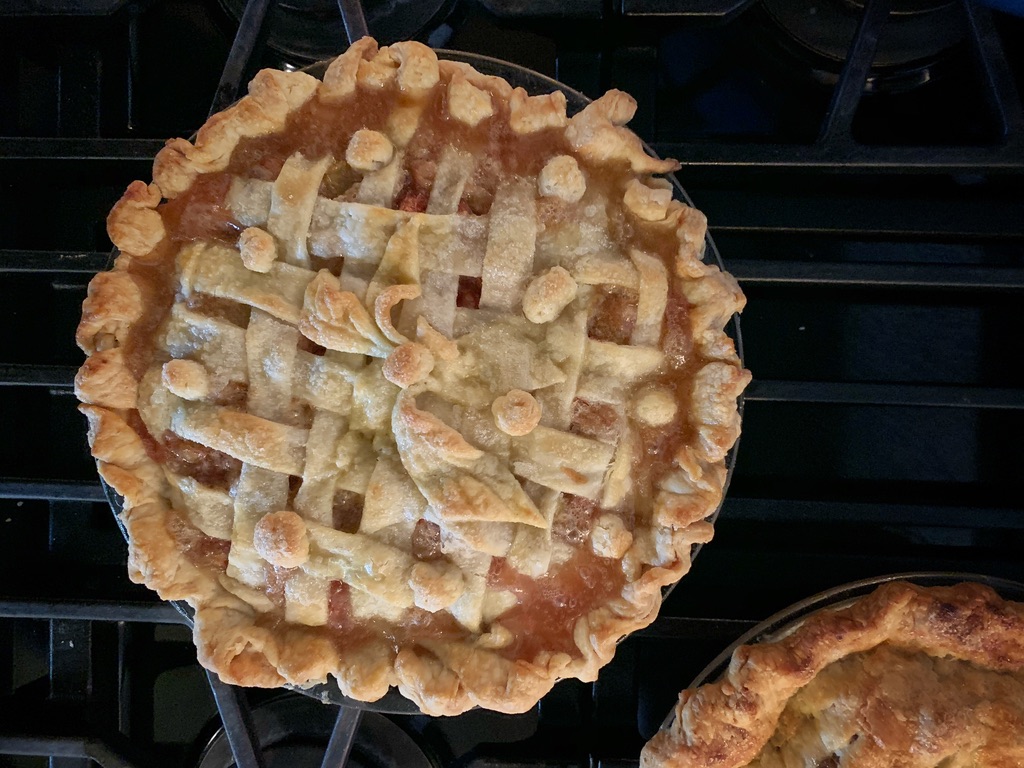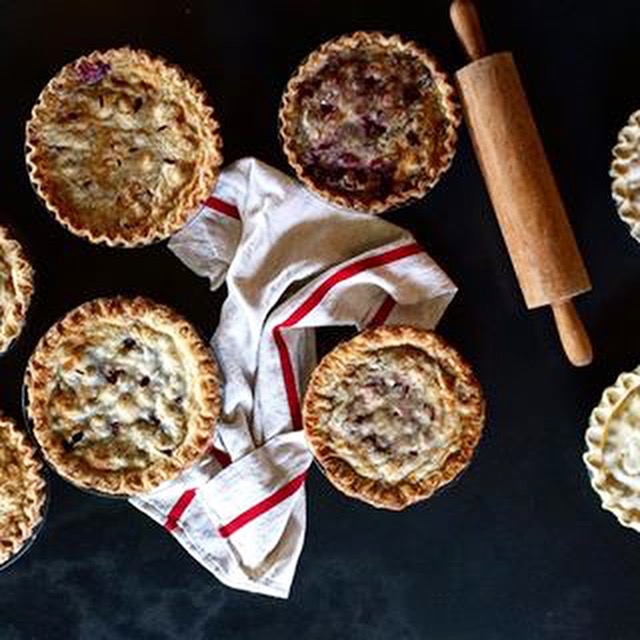It always goes something like this;
“Oh, I make a terrible pie… I just can’t seem to get the knack, especially the crust…Now, my mother on the other hand, she made a beautiful pie crust…they say it skips a generation…and you know what they say about the shoemaker’s children, shoes everywhere, but not a one with a pair…” and so on…and so on…and so on.
Sound familiar? I don’t know how many times I hear people- mostly women- say that they can’t make a decent pie crust. The internet is full of life-saving tips and magazines rehash old articles like “Afraid of Pie Crust? You shouldn’t be. It’s as Easy as 1-2-3” or “How to Succeed in Making Pastry without Flaking Out.” And the way bloggers disclose their battles with pastry? Honestly, it sounds like the opening minutes of a self-help retreat- “Hello, my name is … and I have a problem… I can’t make a pie.”
What is it with this pastry phobia? Why do the skills to make the perfect pie seem to elude so many? That perfect pie, the one with the yielding, not too-sweet centre, the crust that has that flawless combination of a little crunch and melt-in-your mouth, the kind of pie that makes you beg for just one more sliver. When I come across the perfect pie, I think, “this is a perfect old lady pie.” With all due respect, of course, and I mean “old” only in the nicest sense of the word. Really great pies tended to be made with a light hand that had been at it for years. I used to think that the perfect pie could only be found in your grandmother’s kitchen, at a community dinner or at your elderly aunt’s table. That was until I unlocked the secret of good pastry and pie-making and learned to make a pretty great pie, if I do say so myself!
So, how did I come to make a good pie, after wading through the tough pastry swamp? For that, I have three women to thank: Betty, Martha and Dodie. But first, we have to go back a few years.
. . .

Food has occupied a large area of my consciousness for as long as I can remember. A fixation, some might say. I was reminded of this just the other day as I sat listening to a radio program where guests recollected their first kiss. In precise detail, each person, when asked, could remember the exact moment it happened, where they were, and how it felt. I gave it some thought. Could I remember my first kiss? No. Not even sort of. But, food memories? Now that’s a different story.
Take the Box Social scene in Oklahoma, for instance. When all the other girls were dreamily wondering whether Curly or Jud would win the bidding war for Laurey’s lunch – and ultimately her hand in marriage- I was more interested in the lemon pie in her daintily decorated basket.

And while most girls hoped that Maryann would finally, finally win the Professor’s heart on Gilligan’s Island, I was transfixed by the coconut cream pie she pulled out of nowhere. On a desert island! Where did she bake it? What kind of flour did she use for the pastry? And, what about the eggs? As I said, I may not remember my first kiss, but I can definitely remember my first wild blueberry pie.
Enter Betty and her wild blueberry pie…
After a day of blueberry picking in Northern Ontario, Betty, my childhood friend Joanne’s mother, taught us how to make a pie. A most beautiful blueberry pie, eaten on a stoop over-looking a lake, it was made with freshly-picked berries tucked inside the world’s perfect crust. I can almost taste it now.
Forever etched in my mind, that day was an awakening of sorts. The pie part, that is. To be honest, I hated the berry picking – hours just to fill a small bucket, fighting off mosquitos the size of hummingbirds, getting car sick on the the ride home- but, the pie. Oh, that pie.
Once home from picking, we were put to work. Wrapping tea towels around our waists for aprons, Betty let us roll the dough and stood at our sides patiently while we placed the pasty in the dish. I can still see the filling gently bubbling out from the prettily-scored top as Betty lifted it out of the oven. A miracle to behold.

It nearly killed us waiting for it to cool and I’m sure we burnt the roof of our mouths with our impatience, but it was worth it. Sweet, slightly sour, dripping with juice. Pie perfection. Falling into a swoon and with purple stains on my lips, that day marked the start of my quest to make the perfect pie. But, as with any quest for perfection, the journey was a bit of a long road.
My early pies were a combination of bad to worse. No matter how hard I tried, the crusts were either tough or under-cooked. Fillings were too runny or too sour. And, I’ll spare you my meringue pie disasters. That perfect pie, the pie that tasted like it could only have been made by your grandmother, eluded me for years.
And then one day I met Martha…
The summer after I turned twenty and having just returned from a year travelling in Europe, I got a job as Head Cook at a tree-planting camp. Originally, I had applied for the job as “Cookee” but the old Finn woman who was originally hired, and had been running the kitchen for years, bailed at the last minute and I was promoted.
So, with little cooking experience, other than a short stint at cooking school and a kitchen job at a trendy wine bar in England, I took on the responsibility of cooking for 50 tree-planters in a camp hundreds of miles up a logging road. For the next two months I would spend all of my wakening hours– about 18 each day- in a trailer fitted with a commercial stove, two antique formica prep tables, rusty chef’s knives, a giant freezer, an inordinate number of mosquito coils, and what appeared to be enough sacks of potatoes to feed about a thousand people. Apparently the last cook served large amounts of mashed potatoes at every meal. As you can imagine I was way out of my depth, gastronomically-speaking, and badly in need of guidance.
Luckily for me, a woman named Martha, who, as it turned out, took the job as “Cookee” because she didn’t feel qualified to take on the role of Head Cook, was sitting in the kitchen drinking a cup of freshly-perked coffee when I arrived. At her side was her husband Bill, a dour-looking retired train engineer turned “Bull Cook” – camp speak for care-taker/cook’s assistant. With pursed lips, they examined me up and down for what felt like ages before speaking.
“Ever cooked in a camp like this before?” Bill asked with a clearly cantankerous tone in his voice.
“Ah, ah, ah….well, not exactly…I, I, I, mean, well, no. No I haven’t, as a matter of fact”, I squeaked out.
Hardly waiting for an answer, he gulped the last of his coffee and grumbled to Martha out of the side of his mouth as he stomped out the door, “ Don’t look old enough to me. Can she bake a pie? I sure as hell hope she knows what she’s doing!”
And, so began my career as a camp cook. Over the next six weeks Martha and Bill pointed out- at every opportunity, I might add- that I was grossly under-qualified for the job. To be fair, I have to admit they were right. Who was I trying to kid? I really didn’t have a clue how to cook for 50 hard-working Indigenous men who were flown in from northern communities to regenerate a little corner of the Boreal forest. Men who were used to simply-cooked food, mostly wild fish and game, and who, while very appreciative, were obviously not keen on my vegetarian lasagna. (Did I mention I was going through a vegetarian phase?) And while I may not have been the meat and potatoes cook they were hoping for, they did love my baking and consumed it at an alarming rate. Luckily, I was pretty good at muffins, cookies and cakes, but pastry proved a bit of a challenge. This is where Martha came in.
In spite of herself, and with much clucking of her tongue, Martha took the time to teach me how to make a very flaky pastry.
“If you’re gonna make a decent pie, Girlie, (the name she had started calling me) you need to start with a darn good pastry.”
Martha taught me the importance of a light hand, of the care to be taken when cutting in the chilled fat and of never, ever over-working the dough. Before I knew it, I was cranking out several pies per day and while Martha’s were far superior, I was definitely on the road to making a pretty good pie. For that, I will be forever grateful, and even though I had come a long way in that Northern kitchen, pie perfection was still a few years off.
Aunt Dodie’s pies and tarts were there all along…

Aunt Dodie, whose real name was actually Flora, was my father’s sister. Dodie, or Dode for short, was known in the family for making the perfect apple pie- the kind of pie that would fall into the life-altering category of pie-eating experiences. Aunt Dodie was a home cook who had the enviable talent to turn out deliciousness with seemingly little effort. She wasn’t the first person in the family to be good at baking. My great-grandmother and great aunt ran a bakery in the early part of the twentieth century. But of Aunt Dodie’s generation, she was the undisputed baking queen. She made the most perfect, flaky crust. The apples in her pies melted in your mouth and had just the right amount of sugar and spice. Really, if there were Seven Wonders of the Culinary World, Aunt Dodie’s apple pies would top the list. So, as I said, when I announce that a pie has reached the level of “old-lady-perfection” it is the highest of compliments and there is only one person I knew who could make the perfect “old lady pie” over and over and over- Aunt Dodie.
And, it wasn’t just the perfect pie for which she was known. Aunt Dodie’s butter tarts were a wonder to behold. More than once, I shamelessly salivated at the thought of biting into one of her butter tarts. They were the ideal antidote for just about anything, but especially the cravings that come on when you are studying for your university finals.
In my second year of university, a few years after my stint in the bush camp, I lived in an old brick apartment building one floor up from my Aunt Dodie and Uncle Jack, who, incidentally was nicknamed, Shortie. Or, Short as he was also called. Short for short, as it were. Dode and Short had a grand three-bedroom flat with a sunroom overlooking the creek and out to Lake Superior. Although it was looking a little tired by the time I took up residence, the building had a genteel air, and a storied history having housed some of the city’s up-standing citizens over the years. But, aside from its character, one of the great things about living in an old building was that you could smell the sweet scent of baking wafting up through the antiquated ventilation system. Aunt Dodie had the uncanny ability to sense exactly when I was in most need of a butter tart and so I would follow my nose one flight down, tap on the door and be welcomed into pastry nirvana. Such a blissful state I reached with each bite, that I knew if I could make pastry even marginally as well, I would be thrilled. I begged Aunt Dodie for her secret.
“Oh, I don’t know, really. It’s no secret”, she said. “Just an old recipe from the back of the lard package, flour, vinegar, egg, cold water, not too much, quickly formed into a ball. Don’t fuss. Don’t roll too much. Sometimes I don’t measure too carefully, I just go by the feel”
“Just go by the feel?”
These five words resulted in the watershed moment of my culinary career.
Just – go – by – the – feel?
In other words…
Lighten up.
Use your intuition.
Feel what is happening. That’s it.
My Aunt Dodie taught me that great pastry and, by extension, all well-made food is arrived at, not by rigid rule following, but by connecting with the ingredients, by not over-thinking or trying too hard and by putting your heart into what you are doing.
When I look back at my road to the perfect pie and to the pastry prowess of Betty, Martha and Aunt Dodie, I realize that, much like Dorothy in the Wizard of Oz who knew that home was there all along, pastry perfection was right there in front of me, if I had only been paying attention. I will be ever grateful to my pie mentors for leading me to a life of pies that included a stint as The Queen of Tarts, but that is another story, all together!
For now, join me in raising my fork in salute to pastry queens past, present and future.


3 Comments